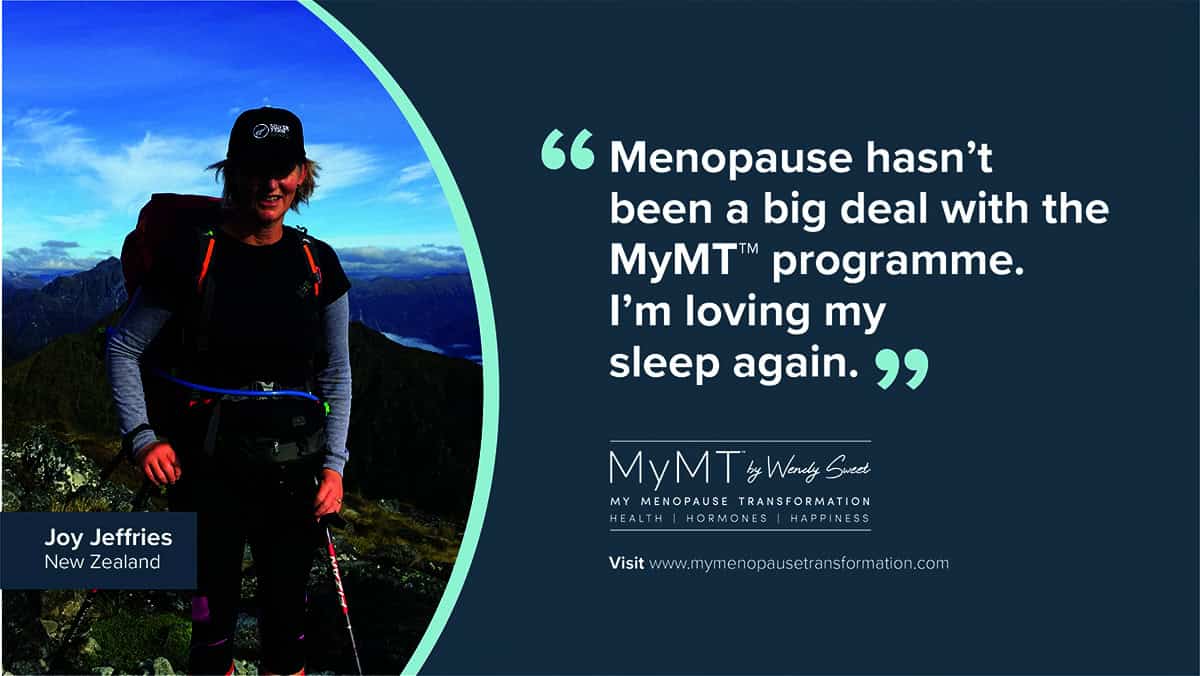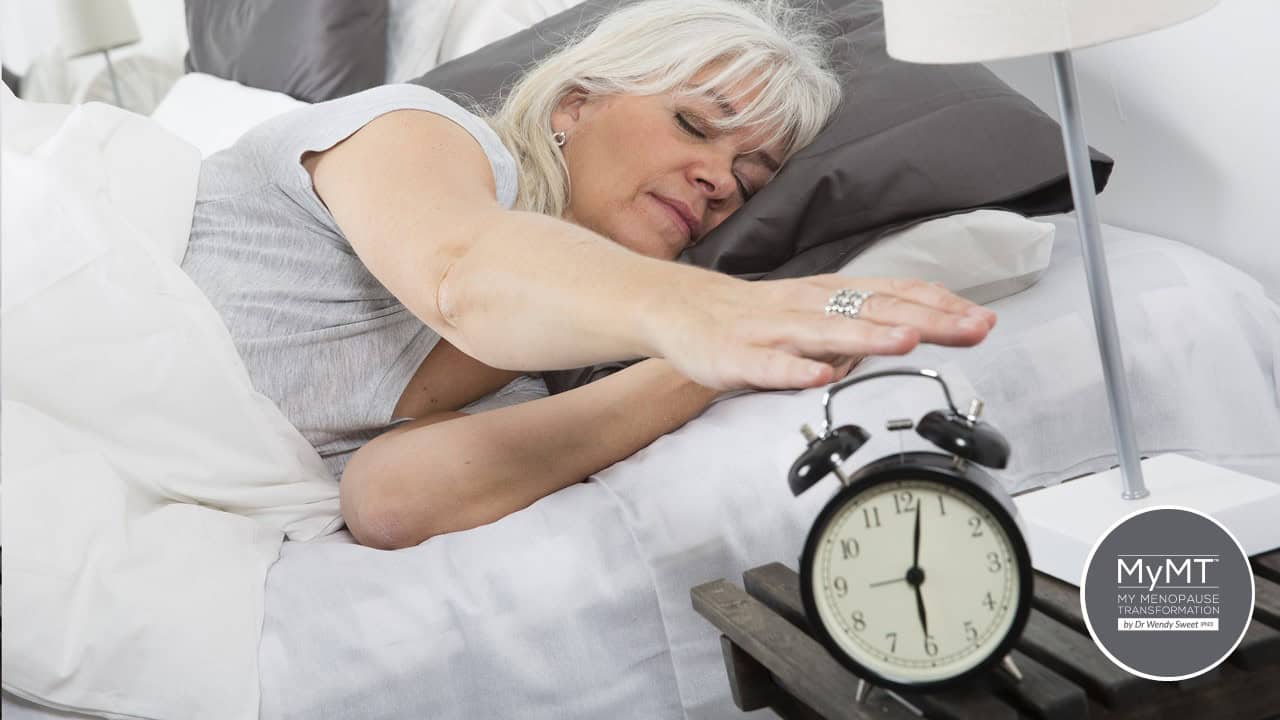“Do you know why, when I immediately wake-up, I get a heat surge through my body?” she asked.
The question took me back in time. A few years ago, when in my early 50s, I experienced the same phenomenon. Even though I’m in post-menopause now, I still have the odd ‘heat surge on waking-up’ moment.
When this happens, I now understand why, so I lie quietly, take some deep, slow breaths to calm my respiratory rate and heart rate, before getting up to start my day.
What is the Cortisol Awakening Response?
I first heard about cortisol and a phenomenon known as the Cortisol Awakening Response (CAR), when I was studying sport and exercise science and exploring the hormonal and blood pressure changes, which occur in female athletes who over-train.
I never imagined that I would be going back to studying this, during my menopause transition, many, many years later.
You may have heard of Cortisol – it’s one of our stress hormones, that I’m always referring to. As a stress hormone it is made in our adrenal glands and as such, it is known as a ‘glucocorticoid hormone’.
What this means, is that it is produced from cholesterol circulating in your blood stream. In this case, cortisol is made from the ‘good’ cholesterol – HDL Cholesterol, in your adrenal glands.
Increased cortisol production occurs when you wake up, exercise or face a stressful event. Your pituitary gland in your brain reacts to these situations and sends a signal to your adrenal glands to produce the right amount of cortisol.
And here’s where your morning wake-up heat production is related to cortisol production. Because this powerful hormone is a glucocorticoid hormone, it also has an effect on the tone or elasticity of our blood vessels.
The awakening response is due to higher cortisol levels and for some of you, your adrenals are producing more cortisol, than they should when you wake up. This is turn affects your blood pressure, heart rate and breathing. In turn, these metabolic changes also cause the wave of heat to pass through your body as the blood vessels don’t dilate as readily as they used to now that you are in menopause or post-menopause.
The cortisol awakening response (CAR) is the acute increase of the cortisol level in the 30-45 minutes after awakening.
CAR is believed to act as a “boosting” mechanism, to aid in physiologically preparing one for waking up and getting on with the tasks of our day.
As such, the morning hot flashes you may be feeling, may be because you aren’t sleeping well, or your blood pressure and resting heart rate are elevated, or you are carrying more inflammatory changes than you should be.
Because the cortisol-awakening-response is driven by your nerves and hormones (neuro-endocrine system), any irregularities depend on how balanced your hypothalamus, pituitary gland and adrenal glands are.
The connection that these three organs have is known as the Hypothalamus-Pituitary-Adrenal Axis (HPA axis) and the working of this axis is considered to be influenced by, and sensitive to, a host of psychological conditions and stressors.
All of which affect your cortisol levels throughout the day.
Managing Cortisol Levels During Menopause
Workplace and personal stress, over-exercising, insomnia, too much fasting and of course, the hormonal changes that we undergo in menopause, all affect your HPA-axis function, which in turn affects your cortisol response.
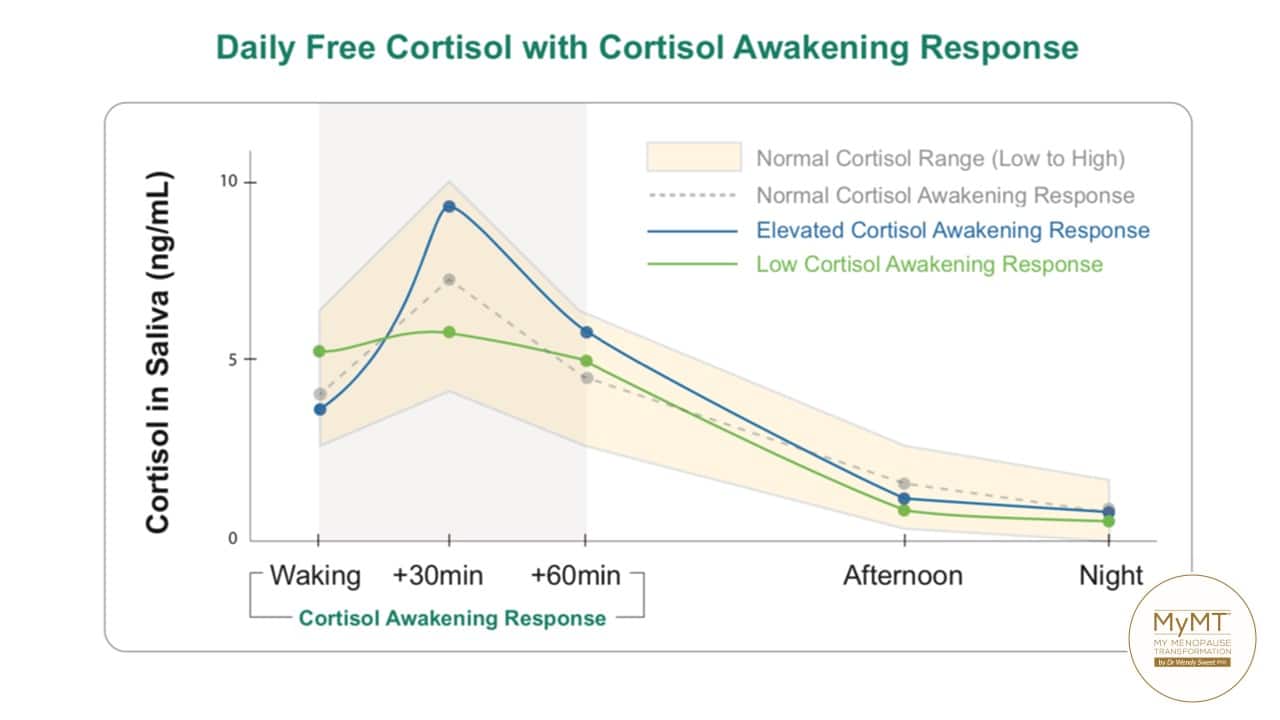
Cortisol is widely recognized as one of our stress hormones. Some is good, too much, isn’t good.
This hormone has a diurnal (day-night) pattern and works in with our sleep hormone called melatonin. Cortisol levels are generally high in the morning and low at night, unless there are disruptions to its normal fluctuations throughout the day, such as when we are busy, exhausted, over-exercising or stressed.
For women going through menopause, high levels of exercise affect cortisol levels
If you do a lot of exercise, particularly heavy, intense exercise, then also be aware that cortisol concentrations increase during exercise.
This powerful hormone helps to free proteins from the muscle, to be used in the liver for the production and use of more glucose. This is why, for endurance athletes especially, they tend to not have the size of muscles that bodybuilders have. Increased exposure to cortisol increases muscle breakdown or catabolism.
It’s the same for women doing lots of high-intensity exercise and not sleeping – the greater the exercise intensity, the higher the levels of cortisol.
As I’m always saying to women who come onto the MyMT™ programmes,
‘without proper recovery, intense exercise can lead to elevated levels of cortisol in the bloodstream and heightened symptoms of physical stress, even when exercise is not being performed. Such as first thing in the morning. For women in menopause, this elevated cortisol, can give them a hot flush on awakening’.
Elevated heart rate and /or elevated cortisol go hand in hand – add on dehydration, inflammation, low blood glucose, low iron levels, and additional stress, then, whether you are an exerciser or not, elevated cortisol can give you hot flashes in the morning on awakening.
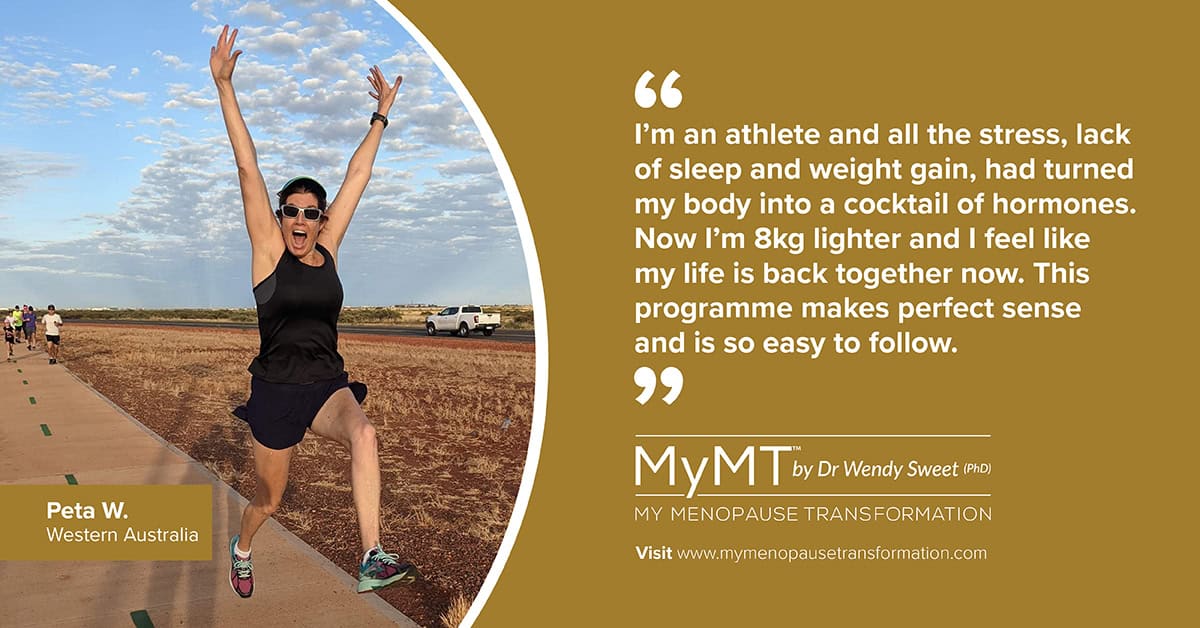
Are you waking up to hot flashes in the morning?
Hot flushes and night sweats differ from the general heat you may feel when you wake-up. Generally, then Cortisol Awakening Response [CAR], doesn’t lead to sweating first thing in the morning.
However, an elevated heart rate, the anticipated stress of your day and overnight insomnia, can contribute to an elevated Cortisol Awakening Response and the feeling that you are sweating or having hot flushes.
Declining Elasticity and Tone in Blood Vessels Increases CAR
For a number of years, I’ve talked about the changes to blood vessels as women move through menopause. This is known as arterial or vascular stiffness. I also introduce you to this phenomenon in the Masterclass on Menopause, which is now online for you.
Menopause is the gateway to our biological ageing, so, numerous changes are occurring around our body. This includes changes to our blood vessels and other organs.
Hormones travel in the blood. They contact virtually all body tissues, however, most of them have targeted actions specific to the different hormone receptors, including in our blood vessels.
As women’s oestrogen levels naturally decline during menopause, blood vessels are ageing. This leads to vascular or arterial stiffness and you have the ability to slow down this rate of vascular ageing, simply by looking after your blood vessels. This includes:
- Stress management
- Anti-inflammatory nutrition
- Adequate sleep
- Weight management
- Moderate aerobic exercise
- Not smoking
- Reducing alcohol intake
The declining elasticity in blood vessels and lymphatic vessels, means that we may feel more bloated, our legs may feel heavy, restless and aching (especially for exercisers). Blood pressure and heat regulation may get out of balance too.
When we have busy, active lives, the vascular stiffness can leave us feeling exhausted.
This is why feelings of overwhelm, high cortisol levels, insomnia and burnout, contribute to worsening symptoms as women move through menopause.
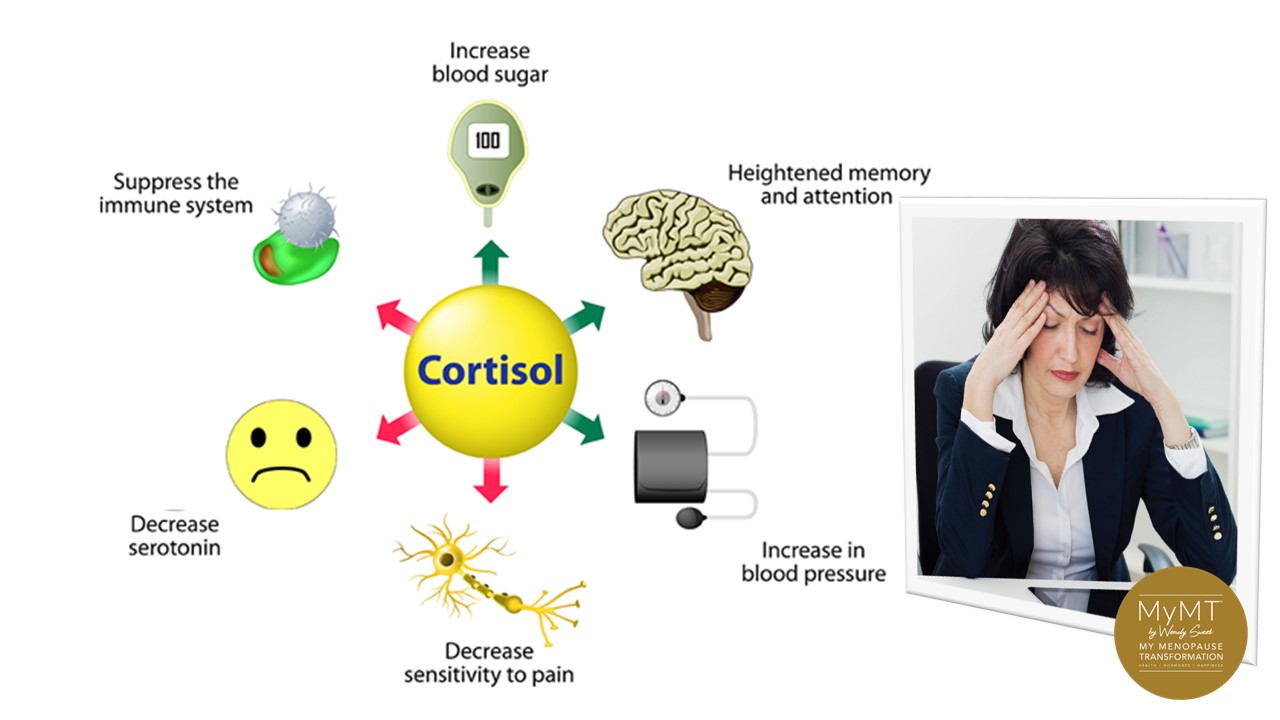
How can I manage hot flashes in the morning?
Understanding why many of you may be feeling the heat on waking up is important, especially those of you in post-menopause and/or whether you are on HRT.
Simply, because there are simple lifestyle strategies you can put in place.
Calming strategies are helpful, such as doing some slow breathing which helps to reduce your heart rate; and for some of you, cutting back on high intensity activity if you aren’t sleeping well.
Don’t forget that in the normal circadian day/night cycle, cortisol should be high in the morning (but not too high) and over the course of the day, it should be lowering as you head towards evening.
This means that evening is the time of day to put your stress away and allow your body and brain to rest and recover.
If you are struggling with your symptoms or menopause weight gain, then I hope you can join me on my 12 week programmes sometime. You can read about how they work HERE.
Dr Wendy Sweet, MyMT Founder/ Member: Australasian Society of Lifestyle Medicine.
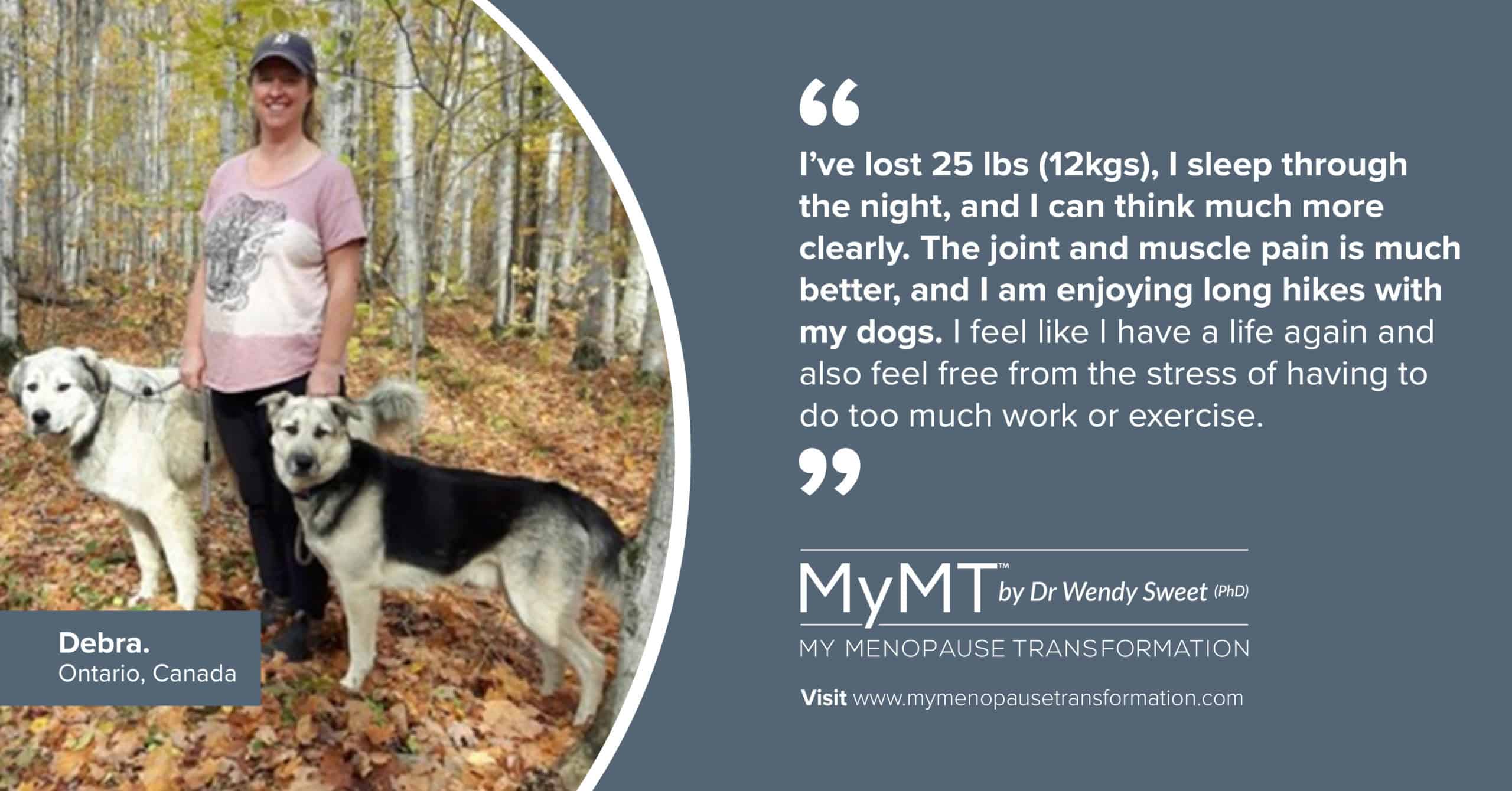
References:
Anderson, T., Wideman, L. Exercise and the Cortisol Awakening Response: A Systematic Review. Sports Med – Open 3, 37 (2017). https://doi.org/10.1186/s40798-017-0102-3
Edwards KM, Mills PJ. Effects of estrogen versus estrogen and progesterone on cortisol and interleukin-6. Maturitas. 2008 Dec 20;61(4):330-3. doi: 10.1016/j.maturitas.2008.09.024.
Elder GJ, Wetherell MA, Barclay NL, Ellis JG. The cortisol awakening response–applications and implications for sleep medicine. Sleep Med Rev. 2014 Jun;18(3):215-24.
Gerber LM, Sievert LL, Schwartz JE. Hot flashes and midlife symptoms in relation to levels of salivary cortisol. Maturitas. 2017 Feb;96:26-32.
Ikeda A, Steptoe A, Shipley M, Abell J, Kumari M, Tanigawa T, Iso H, Wilkinson IB, McEniery CM, Singh-Manoux A, Kivimaki M, Brunner EJ. Diurnal pattern of salivary cortisol and progression of aortic stiffness: Longitudinal study. Psychoneuroendocrinology. 2021 Nov;133:105372.
Langelaan, Saar & Schaufeli, Wilmar & Rhenen, Willem & Doornen, Lorenz. (2006). Do burned-out and work-engaged employees differ in the functioning of the hypothalamic-pituitary-adrenal axis?. Scandinavian journal of work, environment & health. 32. 339-48. 10.5271/sjweh.1029.
Nijm, J. & Jonasson, Lena. (2008). Inflammation and cortisol response in coronary artery disease. Annals of Medicine, 41. 224-33. 10.1080/07853890802508934.
Woods N., Mitchell E., & Smith-DiJulio K. (2009). Cortisol levels during the menopausal transition and early postmenopause: observations from the Seattle Midlife Women’s Health Study. Menopause, 16: 708-718
Whitworth JA, Williamson PM, Mangos G, Kelly JJ. Cardiovascular consequences of cortisol excess. Vasc Health Risk Manag. 2005;1(4):291-9. doi: 10.2147/vhrm.2005.1.4.291.
